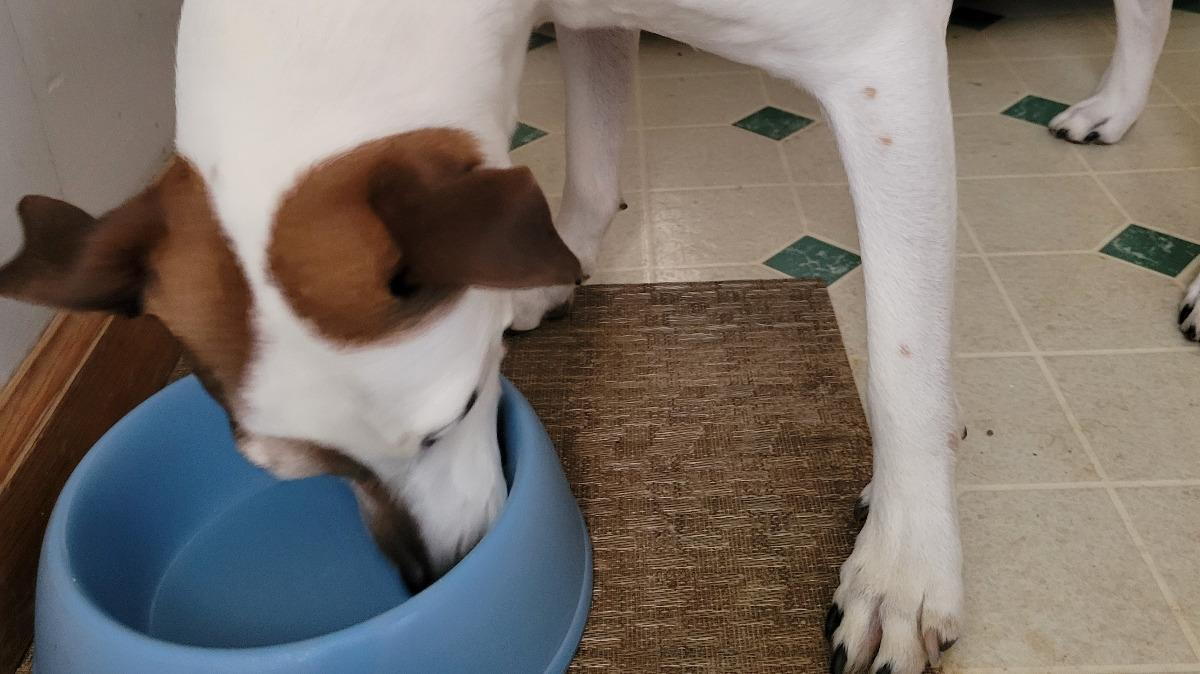Help! Why Won't My Pet Eat?

- posted: Mar. 03, 2023
Help! Why Won't My Pet Eat?
Let’s face it, most pets love food and treats and live to eat, but there are some who are not motivated by food and seem to barely eat enough to live. Reasons for low appetite vary from normal variations in eating habits to serious illness. Certainly, if your pet has any change in his or her eating behavior, he or she should be checked by your veterinarian. Some pets are just not that excited by food. How can you keep them eating a healthy diet?
First, start young. Make sure puppies and kittens are offered a balanced diet. Canned food or a combination of canned and dry food is best for cats. Dogs can eat both, but dry kibble is fine for most pups. Expose them to different food textures, especially cats. Patton’s veterinarians do not recommend raw or grain free diets, but further discussion is beyond the scope of this article. Ask about specific dietary recommendations at your next visit if you have questions. We do recommend Purina, Iams/Eukanuba, Hill’s Science Diet and Royal Canin as good brands. Treats can be used for training and occasional rewards, but should make up no more than 10% of a pet’s diet and table foods should be limited.
What might cause your pet to snub his food? Common medical reasons for decreased appetite include: anxiety or stress, nausea, dental/tooth issues, underlying diseases such as gastrointestinal disorders, cancer, any condition causing nausea, toxins, intestinal blockage and aging changes. Some dogs and cats prefer only certain textures and flavors and appetite can also wax and wane depending on the pet’s activity level. Occasionally, the issue is with the food itself such as stale or spoiled food.
Most pets eat 2-3 times a day, but some dogs and cats only eat once a day or may even skip a day, especially older pets. This is not usually a concern unless your pet skips multiple meals or his pattern of eating changes.
When introducing a new diet, offer 2 separate bowls, one with the current diet and one with the new diet. Gradually remove the old food until the only choice is to eat the new diet. Some pets are quite stubborn and may initially refuse to eat. If the pet is healthy and otherwise acting normal with normal energy level, no vomiting or diarrhea and is still drinking water, it is OK if she doesn’t eat for several days when transitioning to a new diet. A pet will not starve itself, and nearly all pets will eat the food available after 2-5 days. Even if they don’t love it, the pet will likely start to eat if there is no other choice. If your pet holds out for 5 days or more, or your pet seems ill, you may need to offer an alternative and/or have him seen by your veterinarian.
Don’t use your pet’s normal diet to hide medications--the smell or taste may prevent your pet from wanting to eat. It is OK to disguise medications in other foods such as peanut butter or baby food. Stick with one or two types of food and do not be too quick to change diets or offer multiple flavors or varieties if your puppy or kitten does not immediately dive into her food or if your pet is no longer interested in his current diet. Offering multiple varieties or adding foods like chicken or cheese to the food to tempt a pet to eat can create picky pets or may cause multiple food aversions making it more and more difficult to find a food that the pet will eat regularly.
Limit stress at feeding time. If pets eat together, sometimes they may see each other as competition and older or more submissive pets may get pushed out of their food bowls by more enthusiastic eaters. Supervise or feed separately if needed. If a pet seems stressed or has been ill, she may no longer want to eat in her normal area or from her normal bowl. Offering food in another room and in a different bowl or plate may encourage a pet to eat. Adding low sodium broth, warming the food or adding a probiotic may tempt a pet to eat as well.
Poor appetite is a common issue for many pets and can be caused by stress, age, behavioral changes or medical conditions. Healthy pets can go a few days without eating but have your pet checked if the tips above don’t spark his appetite or if your pet is acting sick.
This blog brought to you by the Patton Veterinary Hospital serving Red Lion, York and the surrounding communities.
https://www.petmd.com/dog/symptoms/why-my-dog-not-eating
https://www.catster.com/cat-food/solutions-for-kittys-lack-of-appetite
Location
Patton Veterinary Hospital
425 E Broadway
Red Lion, PA 17356
